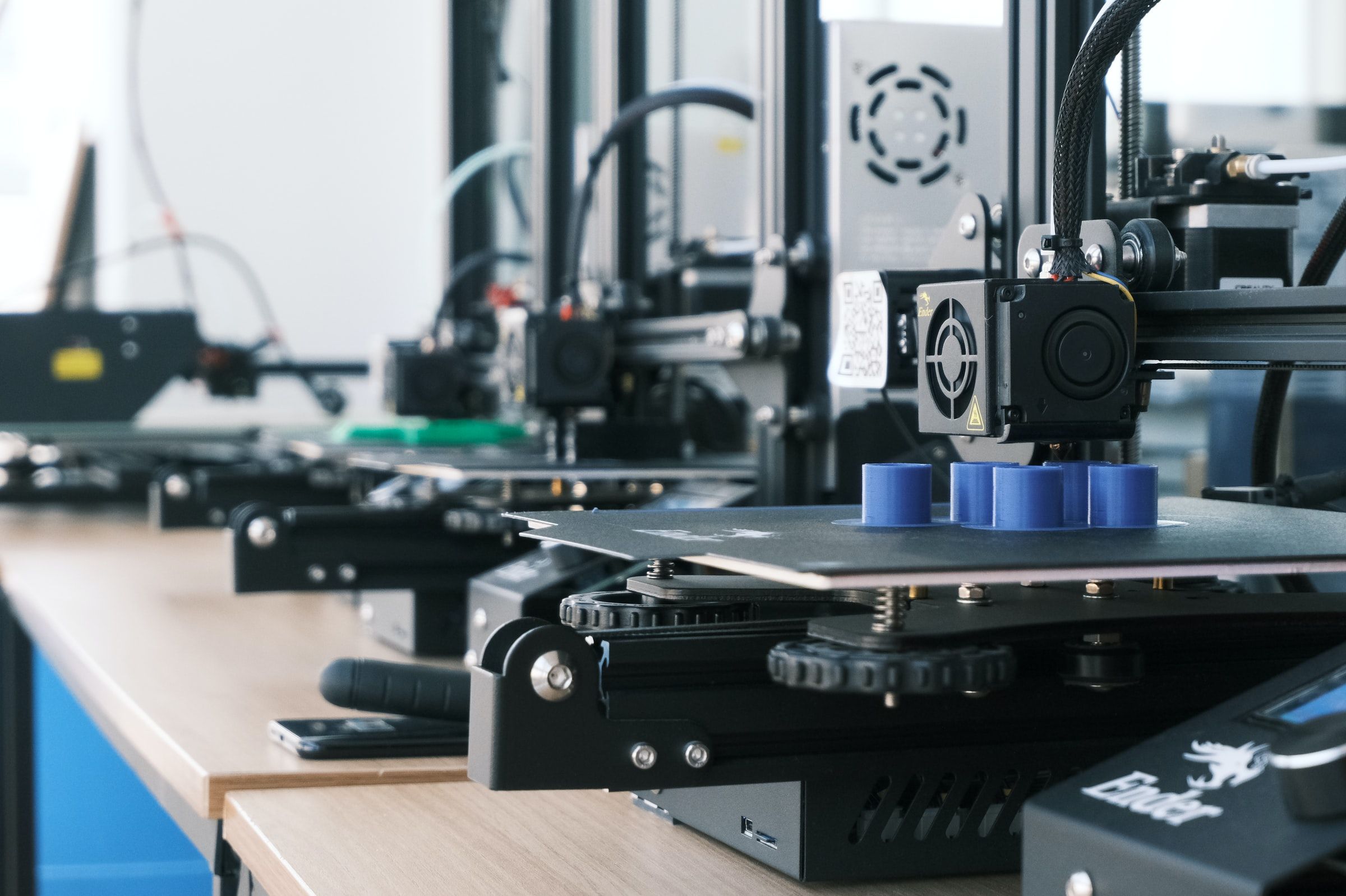About the course
The intermediate course starts with a detailed explanation of the general process of additive manufacturing (AM) and a brief look at its history. Afterwards, the course participant learns how to select the right AM process based on various framework conditions (e.g. required physical or optical properties of a component). Before moving on to detailed explanations of all relevant AM processes, the participant dives into the basis of AM: The 3D model itself. There, the participant learns about the most important properties that a 3D model must have in order to be printed successfully. Once the final 3D model has been exported, the various AM processes come into play. In this course, all relevant AM processes are explained in detail with their advantages and disadvantages. At the end of the course, the participant learns about the potential value of AM for companies and what opportunities AM offers.
Format
The form of education is e-learning with aprrox. 40 hours of lessons and 40 hours of self-studying. Weekly lessons include lectures, thematic videos and performing test tasks. An important part of this course is performing final exam in the form of multiple choices quiz, which contains answers based on study material. The course is set up in compliance with the ECVET System with possibility to obtain the Certificate of attendance.
Who can take this course
This course does not require any specific knowledge on Industry 4.0 and is designed for an audience, who want to learn about 4th Industrial revolution and smart technologies. This means, first of all, students (bachelors, masters), whose curricula include disciplines related to the industry 4.0 as well as specialists and mangers in the various application areas of smart technologies. The course will be of particular interest to:
senior executives or a development department manager of your enterprise interested in the possibilities that additive manufacturing offers and whether the implementation could be useful
professionals interested in choosing the right additive manufacturing process
founders who want to quickly generate prototypes and functional models of their idea or want to build their entire production line on additive manufacturing
engineers who want to get a deep understanding of additive manufacturing
educators teaching graduate and postgraduate courses focusing on additive manufacturing
students or postgraduates interested in additive manufacturing
Hobbyists who want to expand their knowledge of additive manufacturing
Programme of the course
1. AM Process
1.1 Introduction into the processes of Additive Manufacturing methods
1.2 Choosing the right manufacturing technology
2. 3D Modelling/ CAD
2.2 3D modelling tools - Professional and free to use
3. Material extrusion
3.1 FDM
4. Photopolymerization
4.1 SLA
4.2 DLP
5. Powder bed fusion
5.1 MJF
5.2 EBM
5.3 SLS
5.4 SLM
6. Directed energy position
6.1 DED
7. Binder jetting
7.1 BJ
8. Material jetting
8.1 MJ
9.Value for your company
9.1 New possibilities in design and topology optimization
Course staff
Andreas Jahr
Professor of design theory and mechanics and director of the Institute for Product Development and Innovation (FMDauto) at Düsseldorf University of Applied Sciences, previously head of development, design and research in several mechanical engineering companies. Dr.-Ing. at RWTH Aachen University. R&D in the field of general and mechatronic product development. E-mail address: andreas.jahr@hs-duesseldorf.de
Lennard Müller
Research assistant at the Institute for Product Development and Innovation (FMDauto) at Düsseldorf University of Applied Sciences since 2019. Previously tutor in the area of production planning and control systems. E-mail address: lennard.mueller@hs-duesseldorf.de
Sven Markus
Research assistant at Institute of Product Development and Innovation (FMDauto) at the University of Applied Sciences Düsseldorf since 2021. Before graduating with a bachelor's degree, employed as a student assistant at FMDauto as part of several projects since 2019 as well as a technical product designer specializing in machine and plant design since 2017. E-mail address: svendavid.markus@hs-duesseldorf.de
Results
As the result of completing the Additive manufacturing intermediate level course, learners will know:
how 3D models are created and what is important when creating 3D models with regard to additive manufacturing as a downstream process
all relevant additive manufacturing, as well as their function and application
materials and their properties and under which framework conditions they can be used
possible production volume in additive manufacturing technologies
advantages and disadvantages of the different additive manufacturing processes
Competences
By completing the Additive manufacturing intermediate level course, learners will be able:
to decide which additive manufacturing technologies are potentially interesting for the intended application
to decide which of the different AM technologies will be the best for their use case and what problems and opportunities will occur
to describe the different processes of additive manufacturing technologies

